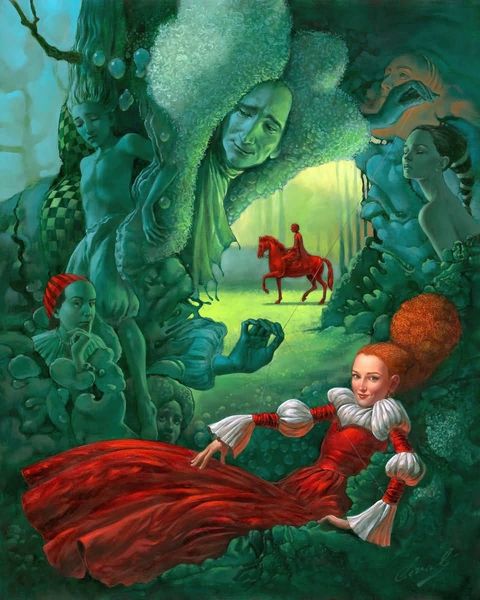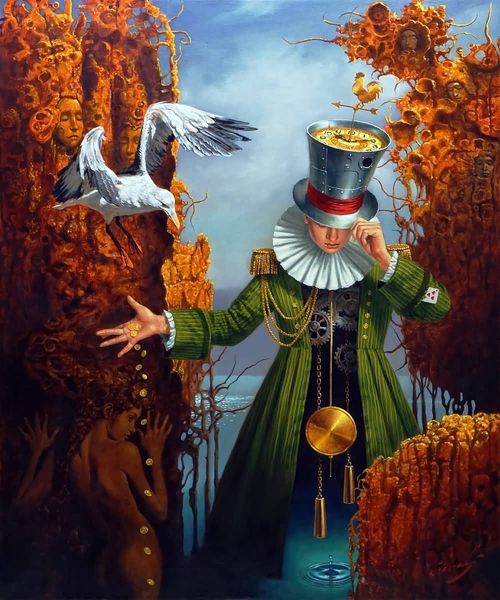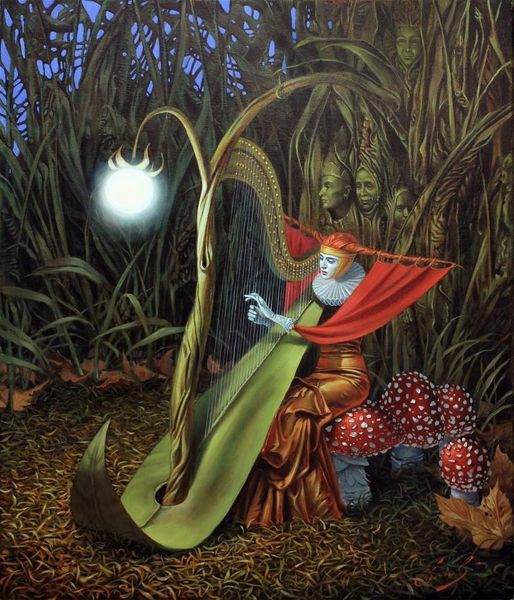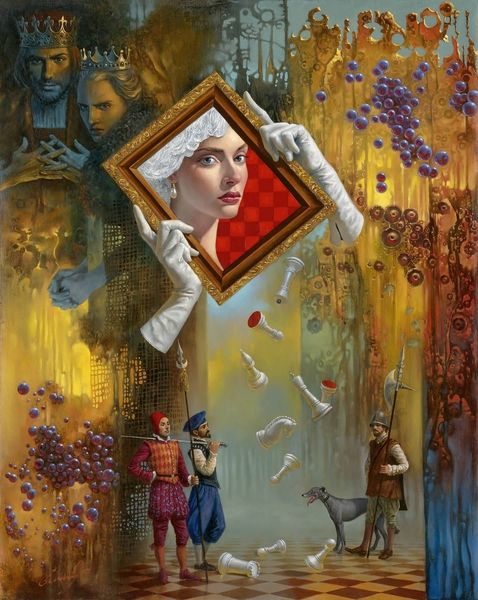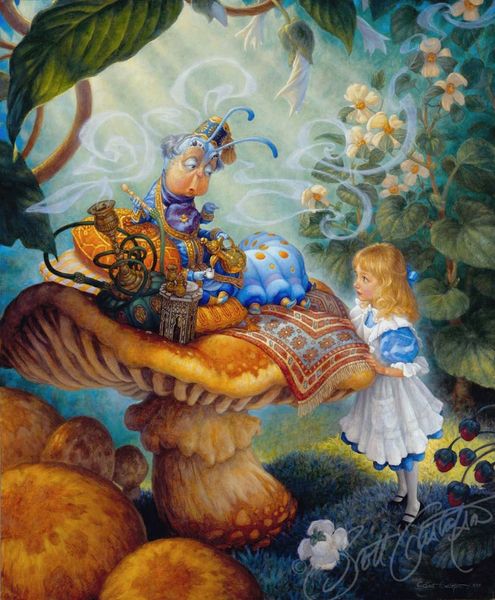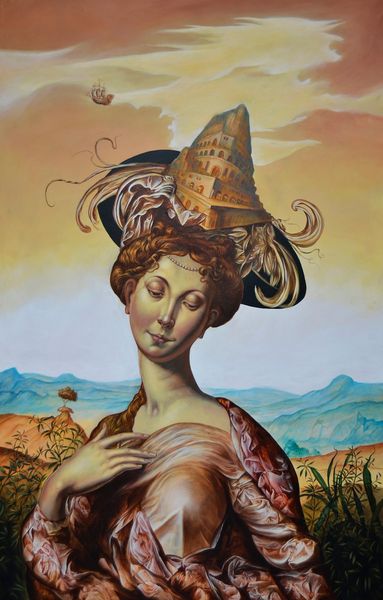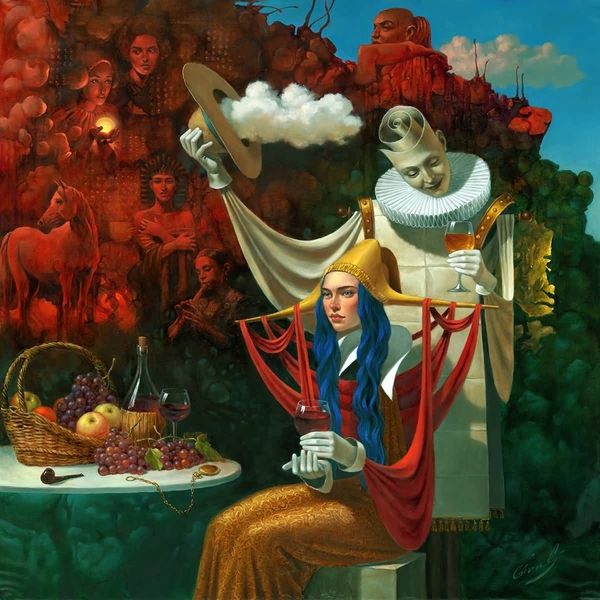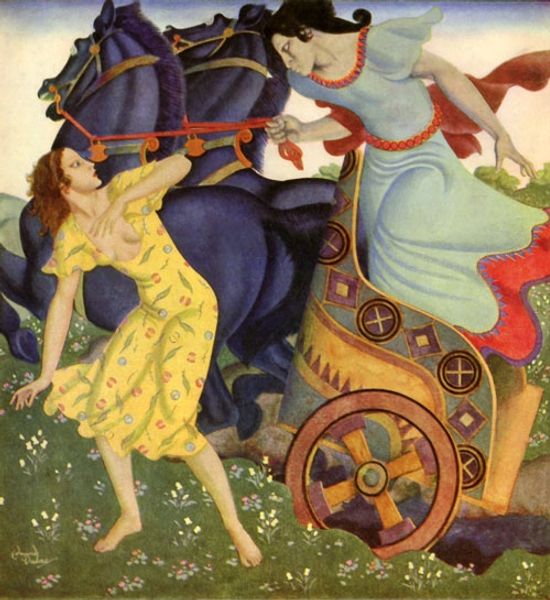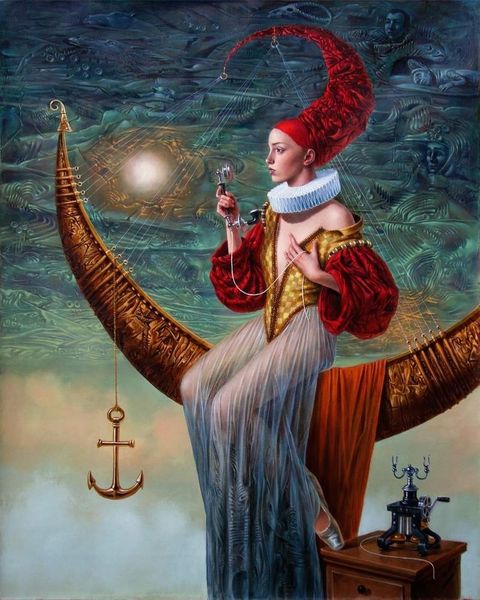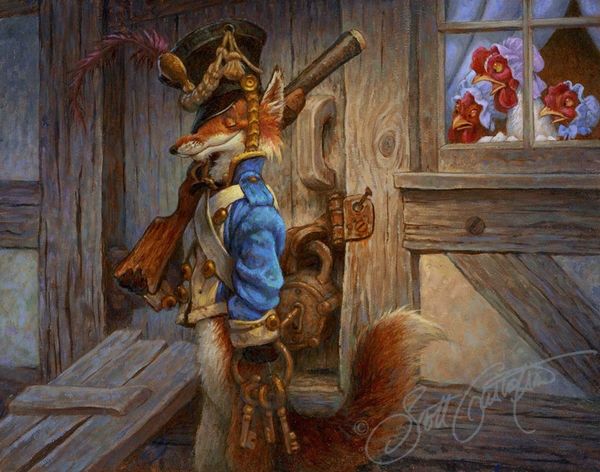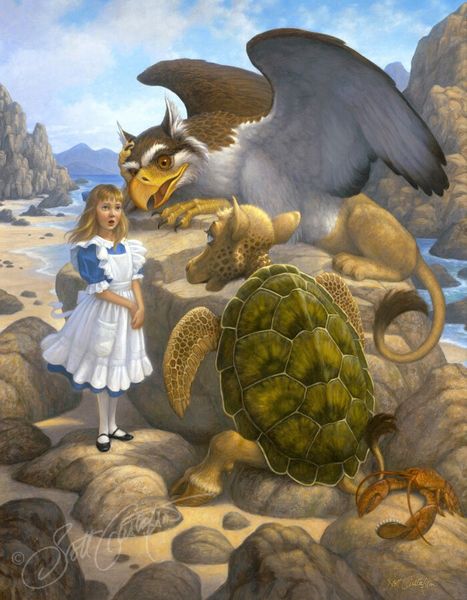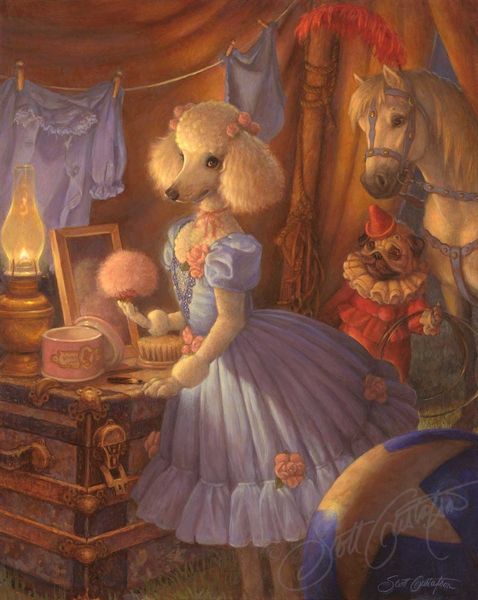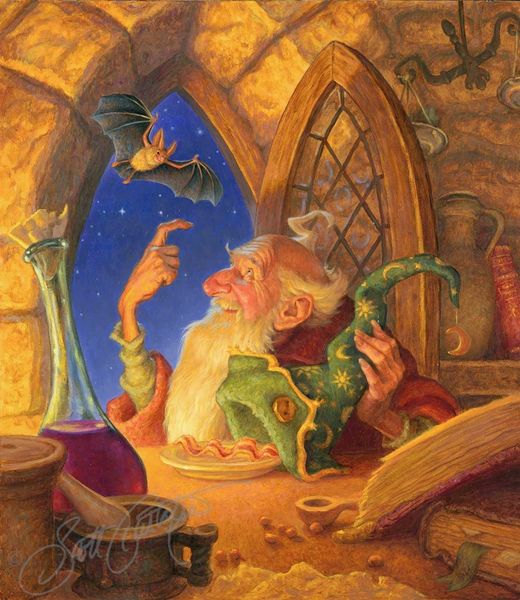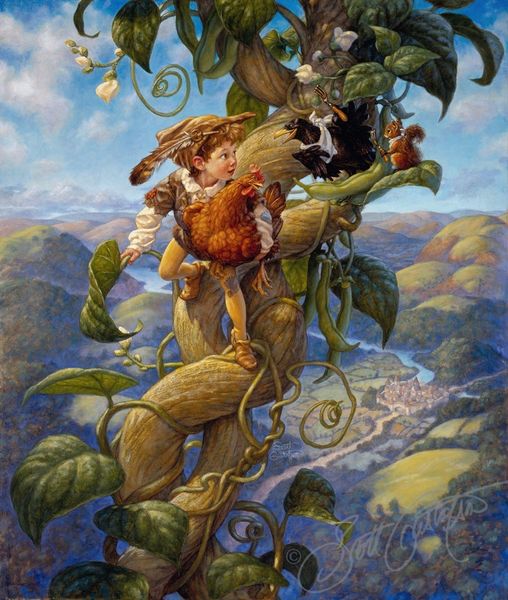
painting, acrylic-paint
#
portrait
#
painting
#
caricature
#
caricature
#
fantasy-art
#
acrylic-paint
#
figuration
#
surrealism
#
history-painting
#
surrealism
#
realism
Copyright: Modern Artists: Artvee
Curator: "The Essence of a Dream," painted in 2017 by Michael Cheval. He renders the composition in acrylic paint, within a round format. Quite captivating, don't you think? Editor: It strikes me as immediately whimsical, with a slightly unsettling quality. The intense colors, the circle motif... It feels like peering into another world. How would you contextualize Cheval's process here? Curator: Considering Cheval's affinity for surrealism, his labor leans heavily into representational strategies but, as with the material support of painting, only gestures to what is possible. It’s representational but defamiliarized—perhaps the figure and his royal subjects are, through painting, transported by way of imagination. How does this fit within contemporary discussions on, say, identity? Editor: Well, the juxtaposition of a seemingly simple maiden against this rather flamboyant backdrop speaks volumes. I think that while surrealism often aims for universal themes, the choices—the European faces, the royal attire—point to very specific power structures. Whose dreams are deemed worthy, whose stories get told? The work invokes our own engagement as the viewer; who are we aligned with? Curator: I understand, absolutely. The very medium of painting plays a part here, since, as we all know, canvas has long served the creation of works with Eurocentric historical narratives. But in his painting, Cheval incorporates contemporary techniques. It's interesting to see how the "dream" unfolds, almost literally manufactured using contemporary art's supply chain. The materiality complicates simple, historical analysis. Editor: Yes, there’s an interesting tension! Acrylic paint, a distinctly modern material, applied with the aesthetics of classical portraiture, framed as a dream. I wonder if Cheval is engaging in a visual commentary on the artificiality of those very constructs: power, history, dreams themselves. I am interested in its message for disenfranchised populations. What do dreams represent for communities impacted by socioeconomic, or historical inequalities? Curator: Perhaps dreams act as the mechanism by which art is born, by which history is both captured, relived, and revised. Thank you for that critical framing of our own assumptions in its presence! Editor: Indeed. Thank you! Considering the legacy and the work yet to come can offer ways of seeing.
Comments
No comments
Be the first to comment and join the conversation on the ultimate creative platform.
